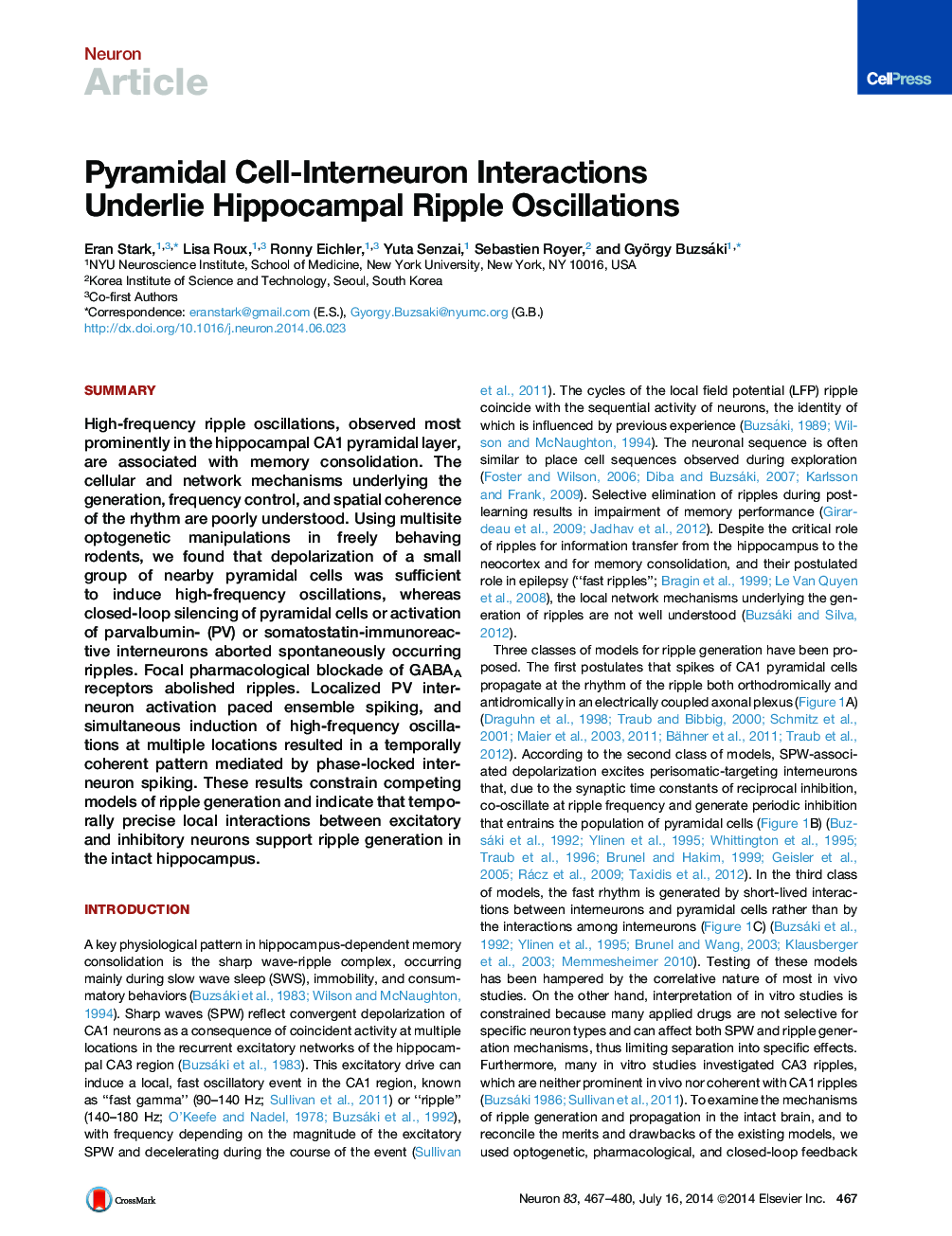| Article ID | Journal | Published Year | Pages | File Type |
|---|---|---|---|---|
| 4321041 | Neuron | 2014 | 14 Pages |
•Local pyramidal cell activation induces high-frequency LFP oscillations•Intact pyramidal cell activity is necessary for CA1 ripples•GABA-A receptor-mediated inhibition is necessary for high-frequency oscillations•PV cells can pace ensemble spiking and coordinate distinct LFP oscillators
SummaryHigh-frequency ripple oscillations, observed most prominently in the hippocampal CA1 pyramidal layer, are associated with memory consolidation. The cellular and network mechanisms underlying the generation, frequency control, and spatial coherence of the rhythm are poorly understood. Using multisite optogenetic manipulations in freely behaving rodents, we found that depolarization of a small group of nearby pyramidal cells was sufficient to induce high-frequency oscillations, whereas closed-loop silencing of pyramidal cells or activation of parvalbumin- (PV) or somatostatin-immunoreactive interneurons aborted spontaneously occurring ripples. Focal pharmacological blockade of GABAA receptors abolished ripples. Localized PV interneuron activation paced ensemble spiking, and simultaneous induction of high-frequency oscillations at multiple locations resulted in a temporally coherent pattern mediated by phase-locked interneuron spiking. These results constrain competing models of ripple generation and indicate that temporally precise local interactions between excitatory and inhibitory neurons support ripple generation in the intact hippocampus.
